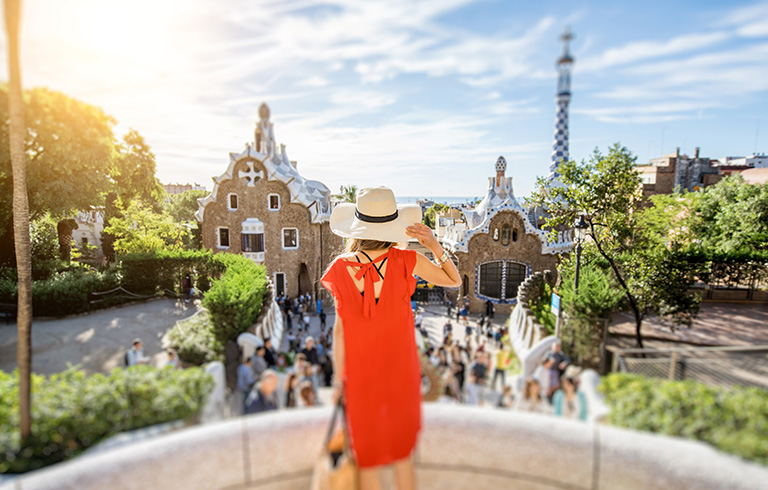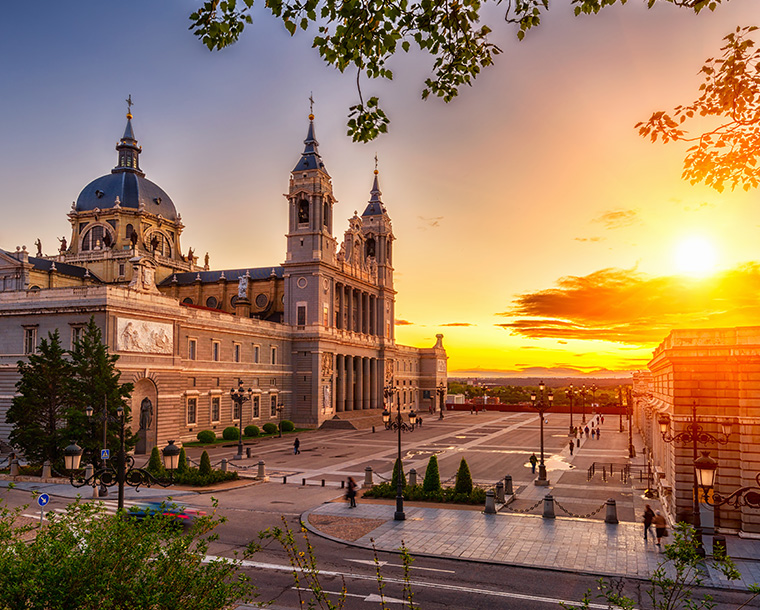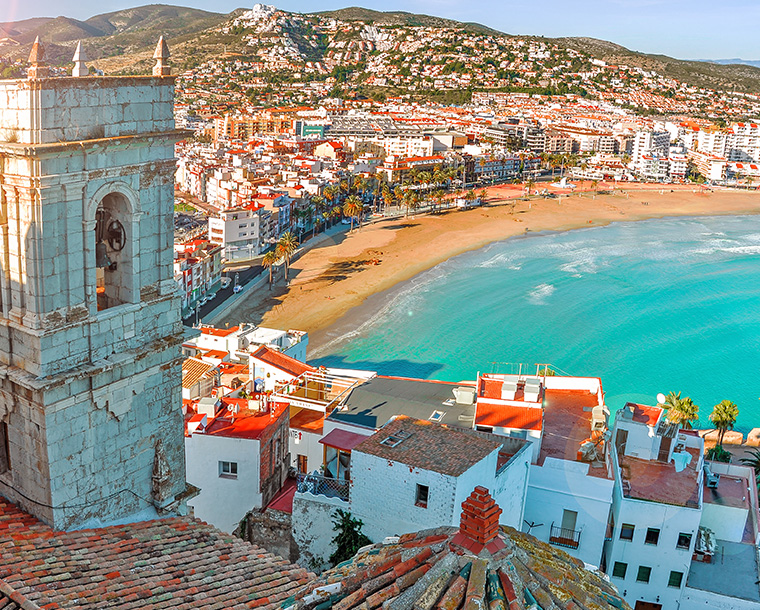

The Capital & Catalonia
- Barcelona,
- Valencia
- Madrid.
- Malaga

Get our assistance for easy booking
Want us to call you?Inclusions
Detailed Itinerary
Day 1
-
INCLUDED
Flight
Hotel
Transfer
Meals
Sight Seeing
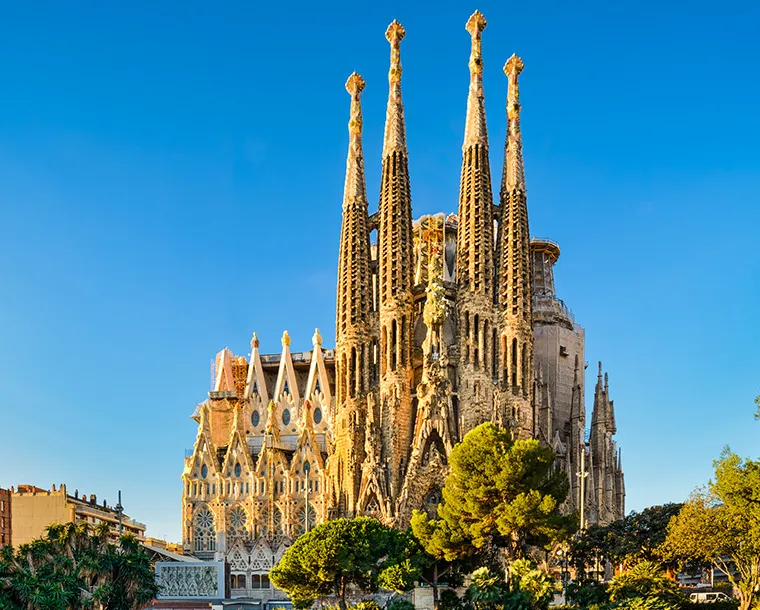
Welcome to Spain
On arrival at Barcelona International Airport you will be met by our local representative and you will be transferred to the hotel.
Day is free, for you to explore the city at your own pace.
Barcelona, the cosmopolitan capital of Spain’s Catalonia region, is known for its art and architecture. The fantastical Sagrada Família church and other modernist landmarks designed by Antoni Gaudí dot the city. Museu Picasso and Fundació Joan Miró feature modern art by their namesakes. City history museum MUHBA, includes several Roman archaeological sites.
Overnight in Barcelona.
Day 2
-
INCLUDED
Hotel
Transfer
Meals
Sight Seeing
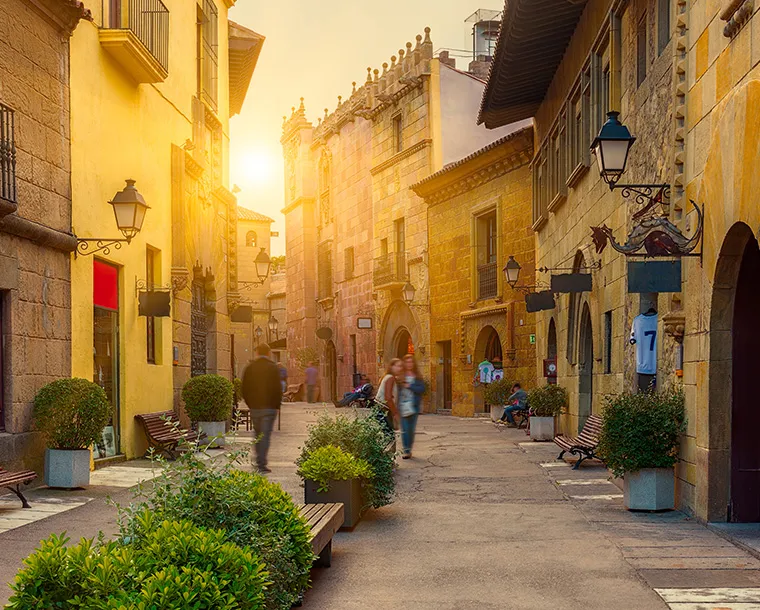
Breakfast at the hotel.
Make your way to the meeting point and join a group on the hop on hop off tours of Barcelona. Discover every corner of Barcelona and make the most of your time in this enchanting city. Barcelona is full of things to do and places to see. If you want to see the city at your own pace then this panoramic tour in an open-top double-decker bus is ideal. It gives you the complete flexibility to board and alight as many times as you want. These covers all the top sites such as the Sagrada Familia, Park Güell, the Camp Nou, the Gothic Quarter and the Olympic Ring. Also learn about the history and culture of Catalonia’s vibrant and cosmopolitan capital.
Overnight in Barcelona.
Day 3
-
INCLUDED
Hotel
Transfer
Meals
Sight Seeing
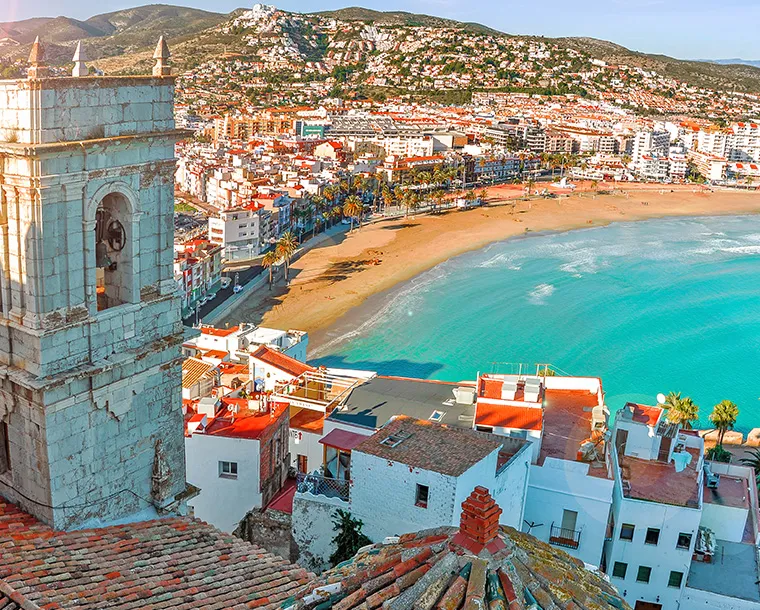
Breakfast at the hotel.
Prepare for check out and make your way to the train station. Board the 2nd class train from Barcelona to Valencia.
On arrival in Valencia station make your way to the hotel and check in.
Day is free, for you to explore the city at your own pace.
The port city of Valencia lies on Spain’s southeastern coast, where the Turia River meets the Mediterranean Sea. It’s known for its City of Arts and Sciences, with futuristic structures including a planetarium, an oceanarium and an interactive museum. Valencia also has several beaches, including some within nearby Albufera Park, a wetlands reserve with a lake and walking trails.
Overnight in Valencia.
Day 4
-
INCLUDED
Hotel
Transfer
Meals
Sight Seeing
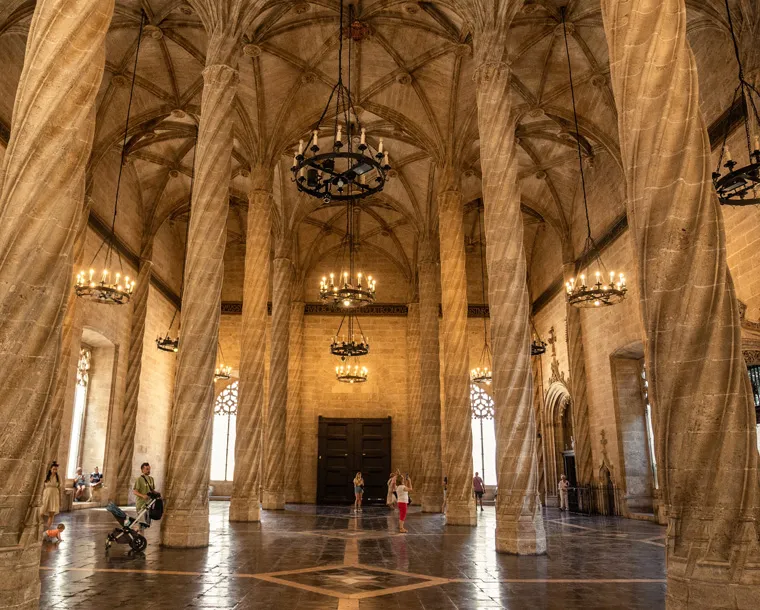
Breakfast at the hotel.
Make your way to the meeting point and join a group on the hop on hop off tours of Valencia. Discover every inch of Valencia and don’t miss out on any the city’s landmarks or attractions however much time you have here. Valencia has been the capital of this part of eastern Spain since the time of the Islamic Taifa of Balansiya, more than 1,000 years ago and as such boasts a number of palaces and churches that are renowned throughout the world. Why not hop off at the Plaza de Toros, and pay a visit to the famous bullring that welcomes thousands of spectators every year, stop by the Fallero Museum, an old hospital turned museum and marvel the collection of Fallas that have been "saved" from the sensational festival over the years. Not to be missed is the impressive City of Arts and Sciences, where you can quench your thirst for knowledge, or disembark at the Bioparc, and visit one of the best animal parks in the world! A few meters from the first stop you can find the spectacular Cathedral, predominantly Gothic, but with Romanesque, Renaissance, Baroque and Neoclassical elements. Get off at stop 16 and visit the Military History Museum or take a relaxing stroll the in the beautiful park over the dried-up riverbed of the Turia.
Overnight in Valencia.
Day 5
-
INCLUDED
Hotel
Transfer
Meals
Sight Seeing
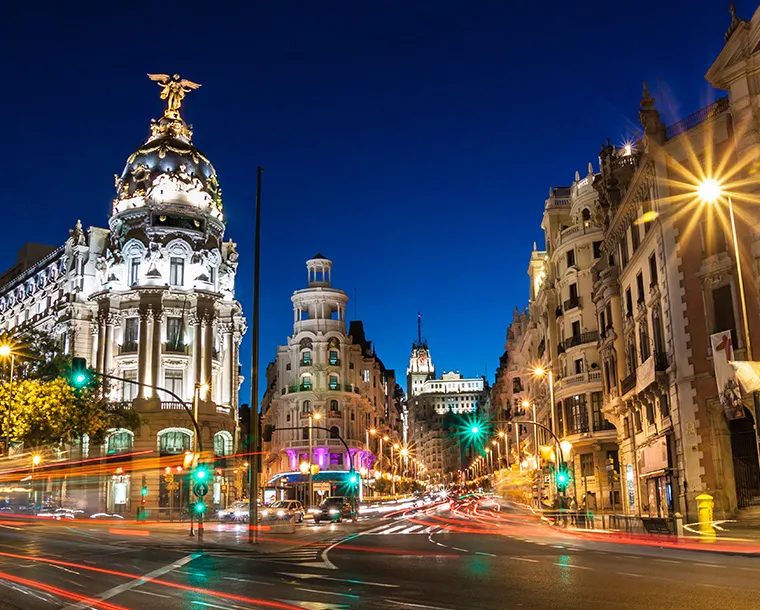
Breakfast at the hotel.
Prepare for check out and make your way to the train station. Board the 2nd class train from Valencia to Madrid.
On arrival in Madrid station make your way to the hotel and check in.
Day is free, for you to explore the city at your own pace.
Madrid, Spain's central capital, is a city of elegant boulevards and expansive, manicured parks such as the Buen Retiro. It’s renowned for its rich repositories of European art, including the Prado Museum’s works by Goya, Velázquez and other Spanish masters. The heart of old Hapsburg Madrid is the portico-lined Plaza Mayor, and nearby is the baroque Royal Palace and Armory, displaying historic weaponry.
Overnight in Madrid.
Day 6
-
INCLUDED
Hotel
Transfer
Meals
Sight Seeing
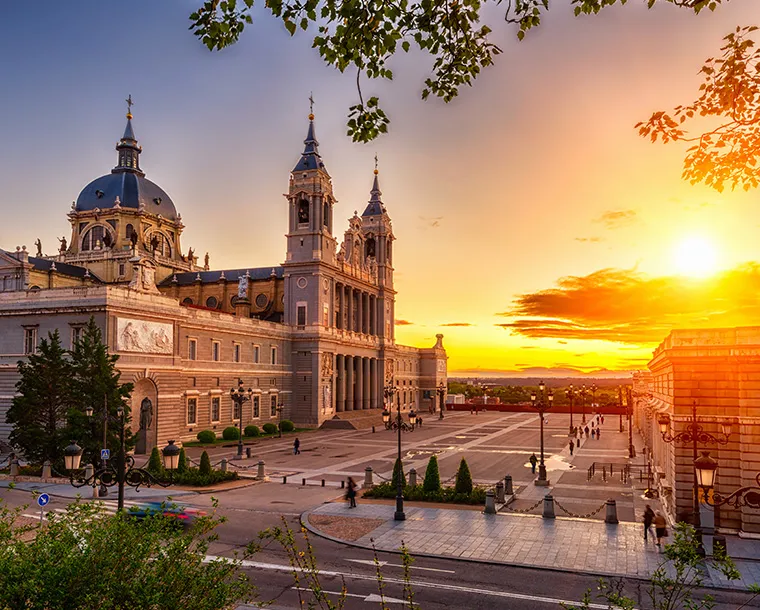
Breakfast at the hotel.
Make your way to the meeting point and join a group on the hop on hop off tours of Madrid. Enjoy all the major sights of the city and learn about its history. Madrid is a city full of historical monuments, modern architecture and places you have to see. It covers the major sights of the city and gives you easy access to many of Madrid’s top museums, shops and attractions. Enjoy panoramic views of Spain’s vibrant and fascinating capital city from the top of this open–roofed double-decker bus. The funniest and easiest way to know the city on our double decker buses.
Overnight in Madrid.
Day 7
-
INCLUDED
Flight
Hotel
Transfer
Meals

After breakfast. The day is free until checkout time. The driver will pick you up and drop you to the airport for your onward flight.
Tour Cost, Terms & Conditions
- The rates are subject to availability at the time of booking request. In the event if there are rate changes due to increase in Govt taxes, or hotel charges a surcharge, or BAR rates (Best available rates), we reserve the right to amend the rates without notice. The exchange rate is subject to change. Please ensure that you have secured the relevant visa / entry permits & valid passport. The best source of visa information is the embassy of the country itself.
- If you are interested in going ahead with this booking, we would require deposits or payments as follows either in the form of cash or cheque:
- 30 days to 21 days prior to departure date: 50%.
- 21 days to 01 days prior to departure: 100%.
- Prices in this quotation are subject to availability. Al-Tayer Holidays reserves the right to offer services of similar or higher standard based in the event of non-availability at the time of booking, at amended cost. - Please ensure that the names given to us for reservations match the names in your passport, as hotels, sightseeing tour companies are very particular about name changes. Mismatched names may result in heavy amendment penalties. We strongly recommend travel insurance as part of your package – we have excellent rates with the world’s best companies – please let us know if you wish us to add this to your package.
Inclusions & Exclusions
Inclusions
Flights
- Economy class, Dubai / Barcelona / Madrid / Dubai.
Accommodation
- 2 nights in Barcelona based on twin sharing basis.
- 2 nights in Valencia based on twin sharing basis.
- 2 nights in Madrid based on twin sharing basis.
Transportation
- Arrival airport transfer in Barcelona on private car.
- Departure airport transfer in Madrid on private car.
Train
- 2nd class train from Barcelona-Valencia-Madrid.
Sightseeing
- City tours in Barcelona, Valencia & Madrid on seat in coach.
Meals
- Daily breakfast
Insurance
- Complimentary travel insurance.
Taxes
- All airline and hotel taxes.
Exclusions
- Visa fees.
- Meals not mentioned in the itinerary.
- Items of personal nature viz. telephone calls, drinks, laundry bills, etc.
- Except all above mentioned in inclusion.
- Some European Countries may charge a local city tax payable directly at the hotel.
Travel Tips
Spain: From bustling Barcelona to majestic Madrid and sunny Seville, Spain’s best-known cities are among the most popular tourist destinations in Europe, but the country also boasts a broad array of beautiful cities and towns that most travelers never see. While Spain’s diverse landscapes lend each city its own picturesque ambience, it’s the country’s long history that differentiates one town from another. A tour of Spain’s less-visited cities gives travelers a unique look at Spain’s long and glorious past and offers a wide range of memorable travel experiences.
Trip Planning: The planning stage of your trip can be instrumental in its success and an enjoyable part of the experience itself. You have a world of options...and plenty to consider.
Entry and Exit formalities: Visitors must hold a passport valid for at least six months & beyond at the time of entering the country. Some nationalities can obtain visa on arrival and for nationalities who requires visa please refer to the Spain consulate website: https://uae.blsspainvisa.com . Spain is part of the 26 Schengen State Countries.
Transportation: Figuring out how to get around is one of your biggest pre-trip decisions. Get our holiday expert best advice on deciding between your options. Based on your trip itinerary, our experts will help you choose wisely. You'll also find a wealth of practical travel tips.
Money: Use your money wisely. Know the best time to use cash or card — and how to avoid unnecessary fees either way — as well as tipping etiquette, and how shoppers can take advantage of VAT refunds.
Phones and Technology: Phones and other smart devices can be huge time-savers...or expensive distractions. Get our tips for making the best use of technology during your trip, and for calling home with or without your own phone.
Packing Light: On your trip you'll meet two kinds of travelers: those who pack light and those who wish they had.
Sleeping and Eating: Your hotel and restaurant choices can be a matter-of-face chore…or they can provide rich opportunities to connect with locals and their culture.
Health & Hygiene: Take comfort: Doctors, hospitals, launderettes, and bathrooms aren’t that different. Dealing with them can even be part of the fun of travel.
Sightseeing & Activities: Once you're on the ground, the real fun begins…but it pays to have a thoughtful plan. Our experts will help you get oriented to your surroundings, use your sightseeing hours wisely, and find your way off the beaten path.
Get our assistance for easy booking
Want us to call you?Discover & Indulge
Spain's central capital, is a city of elegant boulevards and expansive, manicured parks such as the Buen Retiro. It’s renowned for its rich repositories of European art, including the Prado Museum’s works by Goya, Velázquez and other Spanish masters. The heart of old Hapsburg Madrid is the portico-lined Plaza Mayor, and nearby is the baroque Royal Palace and Armory, displaying historic weaponry.
Barcelona the cosmopolitan capital of Spain’s Catalonia region, is known for its art and architecture. The fantastical Sagrada Família church and other modernist landmarks designed by Antoni Gaudí dot the city. Museu Picasso and Fundació Joan Miró feature modern art by their namesakes. City history museum MUHBA, includes several Roman archaeological sites.
Seville is the capital of southern Spain’s Andalusia region. It's famous for flamenco dancing, particularly in its Triana neighborhood. Major landmarks include the ornate Alcázar castle complex, built during the Moorish Almohad dynasty, and the 18th-century Plaza de Toros de la Maestranza bullring. The Gothic Seville Cathedral is the site of Christopher Columbus’s tomb and a minaret turned bell tower, the Giralda.
Granada is a city in southern Spain’s Andalusia region, in the foothills of the Sierra Nevada mountains. It's known for grand examples of medieval architecture dating to the Moorish occupation, especially the Alhambra. This sprawling hilltop fortress complex encompasses royal palaces, serene patios, and reflecting pools from the Nasrid dynasty, as well as the fountains and orchards of the Generalife gardens.
Córdoba is a city in the southern Spanish region of Andalusia, and the capital of the province of Córdoba. It was an important Roman city and a major Islamic center in the Middle Ages. It’s best known for La Mezquita, an immense mosque dating from 784 A.D., featuring a columned prayer hall and older Byzantine mosaics. After it became a Catholic church in 1236, a Renaissance-style nave was added in the 17th century.
Bilbao an industrial port city in northern Spain, is surrounded by green mountains. It’s the de facto capital of Basque Country, with a skyscraper-filled downtown. It’s famed for the Frank Gehry–designed Guggenheim Museum Bilbao, which sparked revitalization when it opened in 1997. The museum houses prominent modern and contemporary works, but it’s the curvy, titanium-clad building that receives the most attention
Valencia is a port lies on Spain’s southeastern coast, where the Turia River meets the Mediterranean Sea. It’s known for its City of Arts and Sciences, with futuristic structures including a planetarium, an oceanarium and an interactive museum. Valencia also has several beaches, including some within nearby Albufera Park, a wetlands reserve with a lake and walking trails.
Toledo is an ancient city set on a hill above the plains of Castilla-La Mancha in central Spain. The capital of the region, it’s known for the medieval Arab, Jewish and Christian monuments in its walled old city. It was also the former home of Mannerist painter El Greco. The Moorish Bisagra Gate and the Sol Gate, in Mudéjar style, open into the old quarter, where the Plaza de Zocodover is a lively meeting place.
Segovia is a historic city northwest of Madrid, in central Spain's Castile and León region. Its centuries of settlement have resulted in a rich architectural legacy, including medieval walls, Romanesque churches, a former royal palace and a Gothic cathedral. Its iconic ancient Roman aqueduct has more than 160 arches, most in the original mortarless granite, and stands above Plaza Azoguejo in the heart of the city.
Málaga is a port city on southern Spain’s Costa del Sol, known for its high-rise hotels and resorts jutting up from yellow-sand beaches. Looming over that modern skyline are the city’s 2 massive hilltop citadels, the Alcazaba and ruined Gibralfaro, remnants of Moorish rule. The city's soaring Renaissance cathedral is nicknamed La Manquita ("one-armed lady") because one of its towers was curiously left unbuilt.
Marbella is a city and resort area on southern Spain’s Costa del Sol, part of the Andalusia region. The Sierra Blanca Mountains are the backdrop to 27 km of sandy Mediterranean beaches, villas, hotels, and golf courses. West of Marbella town, the Golden Mile of prestigious nightclubs and coastal estates leads to Puerto Banús marina, filled with luxury yachts, and surrounded by upmarket boutiques and bars.
Ávila capital of the Spanish province of the same name, is a city in the rolling hill country northwest of Madrid. It’s best known for its intact medieval city walls, with 80-plus crenelated, semicircular towers and 9 gates, including the arched El Alcázar, on the eastern side. Long sections atop the walls are walkable. At night, the lighted walls are a distinctive sight.

